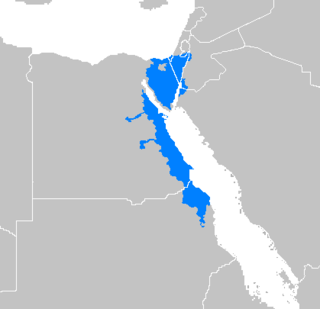 W
WLevantine Arabic, also called Shami, or simply Levantine, is a subgroup of mutually intelligible vernacular Arabic varieties spoken in the Levant, in Syria, Lebanon, Jordan, Palestine, Israel, and Turkey. It is also spoken among diaspora communities from this region, most significantly among the Palestinian, Lebanese, and Syrian diasporas.
 W
WCypriot Arabic, also known as Cypriot Maronite Arabic or Sanna, is a moribund variety of Arabic spoken by the Maronite community of Cyprus. Formerly speakers were mostly situated in Kormakitis, but following the Turkish invasion of Cyprus in 1974, the majority relocated to the south and spread, leading to the decline of the language. Traditionally bilingual in Cypriot Greek, as of some time prior to 2000, all remaining speakers of Cypriot Arabic were over 30 years of age. A 2011 census reported that, of the 3,656 Maronite Cypriots in Republic of Cyprus-controlled areas, none declared Cypriot Arabic as their first language.
 W
WDamascus Arabic or Damascus Dialect is a North Levantine Arabic spoken dialect, indigenous to and spoken primarily in Damascus. As the dialect of the capital city of Syria, and due to its use in the Syrian broadcast media, it is prestigious and widely recognized by speakers of other Syrian dialects, as well as in Lebanon, Palestine, and Jordan. Accordingly, in modern times it is sometimes known as Syrian Arabic or the Syrian Dialect; however, the former term may also be used to refer to the group of similar urban sedentary dialects of the Levant, or to mean Levantine Arabic in general.
 W
WJordanian Arabic is a dialect continuum of mutually intelligible varieties of Levantine Arabic spoken by the population of the Hashemite Kingdom of Jordan. Together with Palestinian Arabic, it has the ISO 639-3 language code "ajp", known as South Levantine Arabic.
 W
WLebanese Arabic, or simply Lebanese, is a variety of North Levantine Arabic, indigenous to and spoken primarily in Lebanon, with significant linguistic influences borrowed from other Middle Eastern and European languages and is in some ways unique from other varieties of Arabic. Due to multilingualism and pervasive diglossia among Lebanese people, it is not uncommon for Lebanese people to code-switch between or mix Lebanese Arabic, English, and French in their daily speech. It is also spoken among the Lebanese diaspora.
 W
WNorth Levantine Arabic is a subdivision of Levantine Arabic, a variety of Arabic. It stems from the north in Turkey, specifically in the coastal regions of the Adana, Hatay, and Mersin provinces, to Lebanon, passing through the Mediterranean coastal regions of Syria as well as the areas surrounding Aleppo and Damascus. It is also known as Syro-Lebanese Arabic, though that term is sometimes used to mean all of Levantine Arabic.
 W
WNorthwest Arabian Arabic is a proposed subfamily of Arabic encompassing the traditional dialects of the Sinai Peninsula, the Eastern Desert, the Negev, southern Jordan, and the northwestern corner of Saudi Arabia.
 W
WPalestinian Arabic is a dialect continuum of mutually intelligible varieties of Levantine Arabic spoken by most Palestinians in Palestine, Israel and in the Palestinian diaspora. Together with Jordanian Arabic, it has the ISO 639-3 language code "ajp", known as South Levantine Arabic.
 W
WSouth Levantine, a subdivision of Levantine Arabic, is spoken in the Southern Levant, in areas such as the Palestinian Territories, Israel as well as in most of Jordan. It is also spoken in Southern Syria, particularly in the Hauran region of Daraa Governorate.